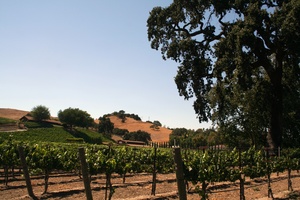 How many winemakers does it take to screw in a light bulb? One, They just hold the bulb in the air and the world revolves around them.
How many winemakers does it take to screw in a light bulb? One, They just hold the bulb in the air and the world revolves around them.I wouldn't be able to pass that along were it not for a very good and self aware winemaker I know. In our little world, the winemaker is the head celebrity. They are the ones whose names are bandied about, and the ones whose mugs end up on the cover of Wine Spectator. It's no surprise that when they are in the market, they sell more wine than us civilians. Most winemakers recognize this is an aberration in the market, and that buyers are ALWAYS more likely to buy wine when a winemaker is there. Many of them further recognize that when they visit a market, it's the grunts that are putting together as good a day as possible. They will see routes that we never really see because of our obligations to run the B and C accounts as well, accounts they never will visit.
That said, there are actually winemakers out there that believe that they are better salespeople than us, and that they understand the market conditions better than we do. This, in part, is because it comes so easily to them. They also can have a valid take in some instances, when the sales reps are really sub par (and we know there's plenty of them out there). But there are winemakers delusional enough to believe that what we do (sales) is B.S. and that we're lucky to even be able to sell their precious products. I'm not going to recite the reasons why the finesse, politics, patience, hard work, timing, hustle, charm, quick wit and wisdom are skills you don't learn from racking or de-stemming. Instead I will simply say this: Unless you want to be a full time salesperson, you're going to need someone with the above attributes to sell your precious juice. No matter what you think of salespeople as a breed, you need to let them do their thing, and understand that it's apples and oranges when you're in the market. You are there to support, not compete. Don't get caught up in the idea that if you can do something we can't do, that gives you a higher rank. All salespeople are really "armchair winemakers", so it's no surprise that the amateurs sometimes actually believe they can outsell us. I'll give you a challenge, go work the market with wines that aren't yours. With wines you have no affiliation with, and give out your cell number, and occasionally show up for a reset at 6 in the morning, the day after hosting another winemaker for another winemaker dinner. Sound unappealing? That's OK, thats why you have us.













